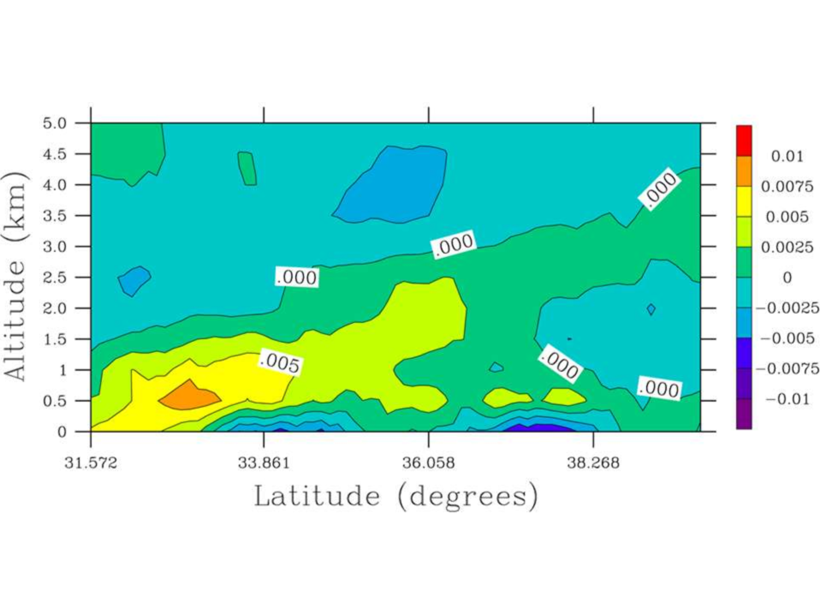Source: Journal of Geophysical Research: Atmospheres
Black carbon contained in airborne particles is often cited as a major factor warming the climate. Kumar et al. [2020] evaluate the temperature and climate forcing changes associated with modified airborne particulate matter concentrations driven by reductions in California greenhouse gas emissions.
Although the adoption of low-carbon energy sources improved surface-level air quality by just under 9 per cent, changes to the column aerosol properties are negligible as are surface temperature changes. The direct effect of carbon dioxide reduction is far greater than the effect of airborne particulate matter reduction in the greenhouse gas mitigation scenarios that were included.
This work demonstrates a source-tracking coupled air quality and meteorology model as an informative method to assess relationships between regional changes to emissions and climate, providing an example that could be applied to other locations.
Citation: Kumar, A., Zapata, C., Yeh, S., Yang, C., Ogden, J., & Lee, H.‐H., et al. [2020]. Effects of low‐carbon energy adoption on airborne particulate matter concentrations with feedbacks to future climate over California. Journal of Geophysical Research: Atmospheres, 125, e2020JD032636. https://doi.org/10.1029/2020JD032636
―Lynn Russell, Editor, JGR: Atmospheres
Text © 2020. The authors. CC BY-NC-ND 3.0
Except where otherwise noted, images are subject to copyright. Any reuse without express permission from the copyright owner is prohibited.

